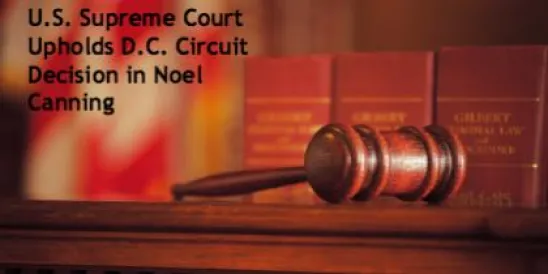Exposure to potentially harmful substances at some level is a fact of modern life. These substances are everywhere — in the air we breathe, in the food we eat, and in the water we drink — and many of these substances are naturally occurring. It is impossible to have zero exposure to all of them.
For both science and law, however, the issue is not whether someone has some detectable exposure. Rather, it is whether the dose was sufficient (in quantity and duration) to cause harm.
In a regulatory setting, the question posed is what level of exposure creates an unreasonable risk of harm. In a lawsuit, however, the alleged harm has already occurred, usually in the form of a disease that has many possible causes. The question is causation.
In C.W. ex rel. Wood v. Textron, Inc., a case involving children’s exposure to the carcinogen vinyl chloride, the Seventh Circuit recently outlined the nature of the scientific evidence of causation that plaintiffs must offer in order to reach a jury. The plaintiffs in Textron were highly sympathetic: two adopted infants who began experiencing serious health consequences (including bloody stools, vomiting, and other issues with their gastrointestinal, immunological, and neurological systems). Defendant Textron had allegedly contaminated the family’s water well with vinyl chloride. The family moved shortly after learning of the potential contamination and the children’s health began to improve. They sued, claiming that their injuries had been caused by exposure to vinyl chloride and that those exposures placed them at an elevated risk of developing cancer.
Textron reaffirms that even the most sympathetic plaintiffs do not arrive in court cloaked in a presumption of recovery.
After four years of extensive discovery, the trial court granted Textron’s motion to bar the plaintiffs’ three medical experts. As a result, the trial court held that the plaintiffs could not prove either (a) that vinyl chloride had the capacity to cause the harm that the plaintiffs had suffered (general causation) or (b) that vinyl chloride in fact caused them harm (specific causation). Without evidence of causation, the plaintiffs could not prove a necessary element of their claim and the trial court granted summary judgment to Textron, ending the case.
Textron reaffirms that even the most sympathetic plaintiffs do not arrive in court cloaked in a presumption of recovery. They must link — causally — the defendant’s alleged breach of a tort duty (here, not to pollute a well with harmful chemicals) and their alleged harm (here, all of the medical problems the children suffered). More importantly, Textron provides a roadmap about the types of evidence that will be admissible to prove causation. Here are four takeaways:
-
Government standards and regulations. The plaintiffs argued that there was evidence for a jury to conclude that Textron had exceeded the government standards and regulations and that this showed the defendant had caused their injuries. The Seventh Circuit was not impressed, upholding the trial court’s exclusion of the plaintiffs’ experts even though a scientific consensus exists (reflected in government regulations) that vinyl chloride is potentially dangerous. “[E]xceedance of government regulation, as we’ve held before, does not by itself prove causation.”
-
Extrapolation by experts from prior studies. Experts often rely on so-called “extrapolations” to show causation, contending that they can scale studies involving excessive exposures over extensive periods down to much lower exposures of shorter duration. The Seventh Circuit was not unsympathetic to the plaintiffs’ claim that they would never have truly comparable studies from which to extrapolate — medical and scientific ethics, of course, prevent exposing children to vinyl chloride to identify the dose-response relationship. Nonetheless, the Seventh Circuit was unimpressed with the experts’ extrapolations, finding that their causation opinions were based on inapplicable studies.
[T]he experts’ extrapolation was “a leap of faith,” not evidence.
One of these studies was a relatively easy call — and it is hard to know why the plaintiffs’ expert even thought extrapolation was appropriate. An animal study showed there was nocancer in rats who sustained exposure ten times higher than the level that the children alleged.
Another study relied upon involved factory workers exposed to vinyl chloride at levels more than 1,000 times the dose that the children allegedly received and the workers were found to have an increased cancer risk. The experts contended that this study could be inversely scaled, establishing causation for the children’s alleged exposures. The Seventh Circuit flatly disagreed: the experts’ extrapolation was “a leap of faith,” not evidence.
-
Computer-based extrapolation. While the issue was not squarely before the Seventh Circuit, it took the occasion to illustrate the limits of its holding about extrapolation by pointing to a type of evidence it would be willing to consider: a “scientific end-around” using “computer-based models” and “computational toxicology.” According to the court, experts could potentially show causation by using these methods to extrapolate doses in animals to those in people and to scale down from higher to lower doses. Of course, calculator-assisted guessing is still guessing, but the court’s strong rejection of typical expert extrapolation could push the use of computer models to prove causation in future cases.
-
Differential etiology. Although the Seventh Circuit affirmed summary judgment, it disagreed with one of the district court’s conclusions concerning “differential etiology” (which the Seventh Circuit noted is often misidentified as “differential diagnosis”). Differential etiology is a process-of-elimination approach to determining the cause or causes of an injury. Under this method, experts consider all potential causes of the symptoms and then eliminate alternatives. That is, they first “rule in” every possible cause and then “rule out” each alternative explanation until arriving at the specific cause.
The district court held that differential etiology can never be used to show general causation (again, that exposure to the harmful substance can cause the type of harm alleged by the plaintiff), but rather only specific causation (that this particular exposure caused this particular plaintiff’s harm). The Seventh Circuit rejected this “categorical exclusion of differential etiology as a method to establish general causation.” Instead, the court held that “future litigants in other cases” should have the opportunity to show that “a rigorous differential etiology is sufficient to help prove, if not prove altogether, both general and specific causation.” In doing so, the Seventh Circuit adopted the Second Circuit’s approach.
The circumstances under which differential etiology could be used to prove both general and specific causation will be left for future cases. The very notion, however, of allowing a diagnosis to show causation is rife with problems. For example, mesothelioma — linked on television and Internet ads, billboards, and bus signage as being caused solely by asbestos exposure — has several known causes (radiation, genetic mutation, and exposure to erionite, as well as asbestos) and often can be traced to no cause at all (idiopathic mesothelioma).
Textron is a welcome reminder that it is the plaintiff who must prove, not just allege, general and specific causation. Junk science does not carry that burden of proof.
Cite: C.W. ex rel. Wood v. Textron, Inc., — F.3d —, 2015 WL 5023926 (7th Cir. Aug. 26, 2015)



 />i
/>i

